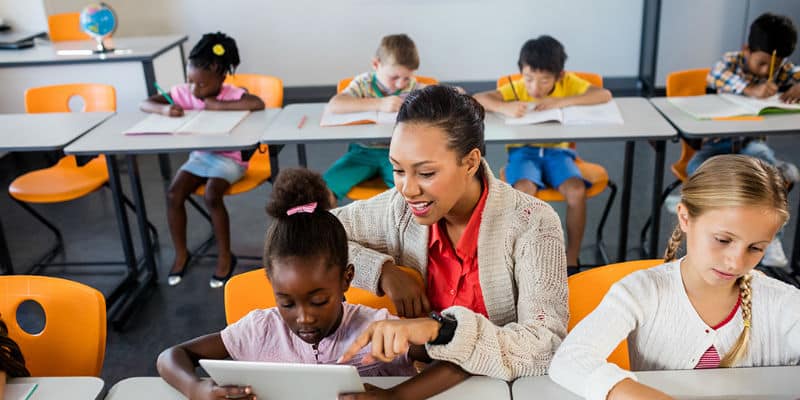Student-centered learning offers enormous potential to better meet each students’ individual learning needs. By varying the time, place, path, and pace of learning, student-centered learning helps those who struggle, those who excel, and those with varied talents and interests to each experience education in a way that sets them up for success. But just offering a menu of customizable learning experiences is insufficient for student-centered learning to work well.
As students progress through various learning opportunities, their schools need to ensure that they master prerequisite knowledge and skills as they advance to more challenging learning experiences. Additionally, schools need a way to ensure that each student’s stack of customized learning experiences provides a core body of knowledge and skills so that diplomas have meaning, and so that students are adequately prepared for college or other post-secondary options.
Mediocre solutions for an outdated era
To some extent, the prevailing credit hour system facilitates this kind of cohesiveness across various modular learning experiences. Common course names, specified learning objectives for each course, the sequencing of courses, and the designation of elective and required courses allow students some flexibility in the selection and timing of the courses they complete to earn a degree. Nonetheless, a number of breakdowns in the credit hour system illustrate key problems that need to be addressed in a system designed to enable student-centered learning.
First, the credit-hour system relies on letter grades because the seat-time requirements for a course are not reliable indicators of actual learning. Hypothetically, any student who attends all class meetings and completes all class assignments earns credit for a course and should, therefore, have mastered all core competencies for the course. But in reality, a student who earns course credits does not necessarily master the course material. Letter grades are effectively quality control signals for addressing this discrepancy. They allow a school to acknowledge that two students who earned the same credits may not have the same mastery of the academic content covered by those credits.
Second, letter grades are themselves unreliable signals of academic achievement. Teachers make a lot of subjective judgments when they develop the assessments and grading policies for their courses. Additionally, practices such as curving and extra credit distort the signal letter grades aim to provide. As a result, two students who earn the same course credits and the same letter grades, but took the course from different instructors, may still have very different levels of mastery of the course material.
Replacing the credit hour system
For student-centered learning to work, it needs to go hand-in-hand with new ways of assessing learning and awarding credit. Schools need better ways of measuring and tracking student learning so that smooth interchanges between various learning experiences can happen with predictable success. In other words, individualized instruction and mastery-based grading need to be two sides of the same coin. Only then can schools and students fully realize the benefits of customizable learning. Below are three key design principles for measuring students’ progress in a student-centered learning system derived from lessons learned in credit-hour system flaws.
1. Grade based on learning objectives, not course completion. A letter grade less than an A in a credit-hour course tells us that a student has not mastered all of the learning objectives for that course. But letter grades provide zero insight into which particular learning objectives the student has not mastered. A better approach is to design grading systems to show students’ progress in mastering specific, granular learning objectives. Such an approach allows students to see more precisely where they need to focus their efforts. It also makes it more feasible to expect students to master an entire body of core content because students can make up just the learning objectives they are lacking rather than having to repeat entire courses.
2. Measure learning outcomes, not rankings or effort. As noted above, another reason letter grades are an imperfect signal of learning is that they often get muddied by practices such as grading on a curve or offering extra credit. Owing to these grading practices, students can earn As in courses without actually mastering all of a course’s content. A better approach is to award learning credit based on demonstrated mastery of learning objectives.
3. Separate teaching and grading. To one degree or another, there are always subjective decisions that shape a grading system—decisions such as which types of assessments to use, how to design assessment items, and how to weight assessment items. Schools can take thoughtful approaches to address this subjectivity. But efforts to address the inherent subjectivity of a grading system get muddied when teachers are responsible for grading their own students. When students do well on an assessment, is it because the students truly mastered the learning objectives, or was it because the teacher made the assessment too easy? Conversely, when students do poorly, is it because they haven’t yet done what it takes to master the content, or did the teacher fail to do his part to prepare students? Or did the teacher make the assessment too difficult? Questions like these demonstrate conflicts of interest for teachers that make it hard for them to be as objective as possible in their grading. A better approach is to separate the role of instructor from the role of assessor. Allow teachers to focus on preparing their students to demonstrate mastery of learning objectives and let other educators focus on creating and administering fair assessments of mastery.
As I consider the future of student-centered learning, I think that future hinges largely on whether student-centered proponents and practitioners can develop better systems of grading and measurement. In many ways, providing great student-centered learning experiences is the easy part of the equation. People have been learning via means other than completing course credits for as long as people have been learning. But for student-centered learning approaches to supplant the conventional system of courses and credit hours, we need better ways to measure, track, and demonstrate students’ learning outcomes.



